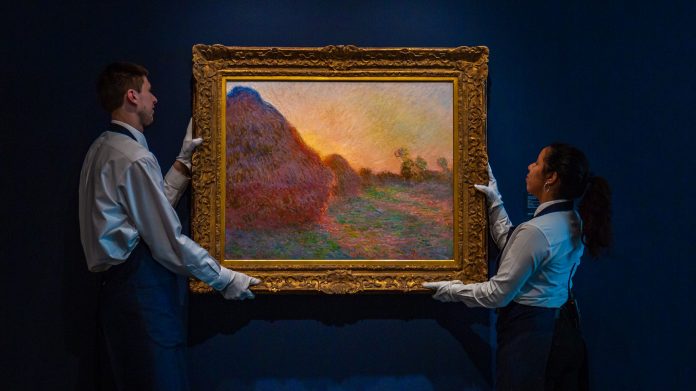Every year, auctions are filled with breathtaking scenes of wealth, influence and drama to acquire the most extraordinary paintings. With the world’s growing number of wealthy people, these multimillionaires choose to invest in rare works of art, and in the bargaining battle, prices can rise to incomprehensible amounts, determined by the rarity, condition and provenance of the painting, and sometimes simply by prestige. We invite you to take a look around the gallery of the most expensive paintings sold at auction and appreciate the artworks with your own eyes.
10. Claude Monet “Haystacks” (Meules, 1890)
This painting by Claude Monet, one of France’s best-known artists, was previously bought and owned by a philanthropic couple who came to Paris in 1982. In 2019, “Haystacks” was sold for almost 110.7 million dollars. The silence that accompanied this sum was soon followed by loud applause, which could be heard outside the hall. The buyer of the stunning sunset remained anonymous to the public. It is the most expensive work by Claude Monet ever sold.

This painting is inspired by the artist’s own home: in 1890, at the age of 50, Monet bought a plot of land for the first time, and haystacks were a frequent sight in the surrounding fields. In fact, there are more than one of these paintings – ‘Haystacks’ belongs to a series of 15 paintings depicting haystacks at different times of the day and in different seasons.
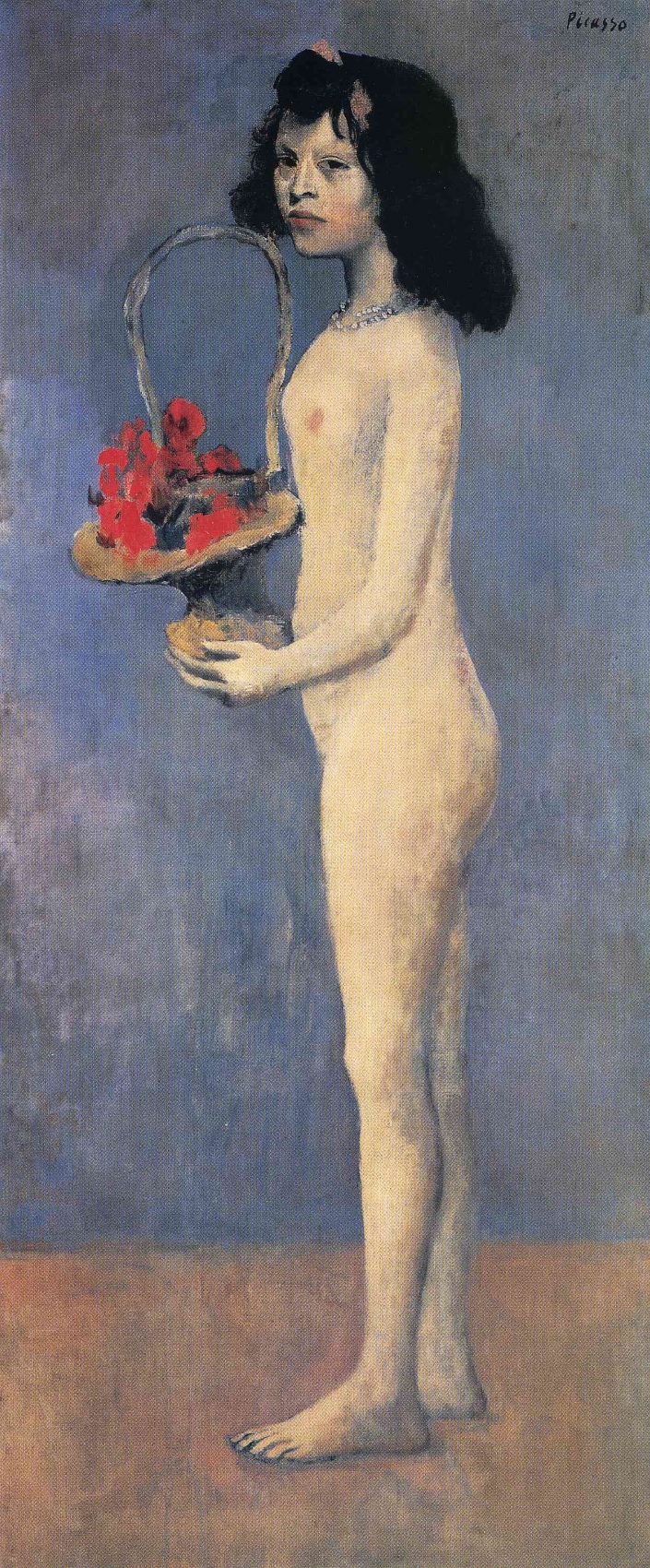
9. “Young Girl with a Flower Basket” (1905) by Pablo Picasso
The Rockefellers are one of the most famous families in the United States. The Rockefellers boast enormous wealth and have often been referred to as the “unofficial royal” family. They acquired this painting back in 1968, but decided to release most of their impressive art collection in 2018. The painting was sold for a breathtaking $115 million. Although this amount seems high, it is not the most expensive painting by the artist that has been sold.
As the title suggests, this painting depicts a young naked girl holding a basket of flowers. As well as selling flowers, she is believed to be involved in child prostitution because of her naked body and her grim expression. Picasso painted the picture in autumn, when he returned home to Paris after his trip to Holland. Picasso’s painting was influenced not only by his experiences abroad, but also by Ingres, a French neoclassicist.

8. Edvard Munch’s “The Scream” (1895)
Edvard Munch created four versions of his most popular painting, three of which are permanently housed in Norwegian museums – the Edvard Munch Museum in Oslo and the National Gallery of Norway. In 2012, the only work remaining in Peter Olsen’s private possession came to the attention of the art community worldwide. It took just 12 thrilling minutes to sell the painting, bringing the price up to $119.9 million in that short time. As is customary, the new owner of this valuable painting is being kept under wraps.
“The Scream” is considered an expression of personal suffering. Munch’s mother died when he was just 5 years old; his sister Sophie died when he was 14; his father died when he was 25; and his remaining sister, Laura, was diagnosed with schizophrenia and committed to a mental hospital in Ekeberg. The painting shows the Ekeberg hill, from which people passing by could hear the screams from the hospital and the nearby slaughterhouse. The same place is also known for its high suicide rate.

7. Gustav Klimt “The Woman in Gold” (1907)
Cosmetics fans know the name Robert Lauder – the incredibly wealthy tycoon behind one of the world’s best-known cosmetics brands. But not many people know that Robert Lauder paid $135 million for a painting considered to be Klimt’s ultimate masterpiece. Although Lauder avoids revealing the final price of the purchase, close sources confirmed the art enthusiasts’ speculations in 2006.
The painting was involved in a scandal, becoming the focus of a legal conflict between the Austrian authorities and the niece of the woman depicted in the painting. She claimed that the painting, along with four others, was stolen by the Nazis during the Second World War. The court accepted the niece’s claim.

6. Qi Baishi “12 Landscape Screens” (1925)
In 2017, Qi Baishi’s painting broke a couple of records at the time of its sale – it was the most expensive painting sold for a short time, and the highest-priced work by a Chinese artist. The artwork fetched $140.8 million for its buyer. At the time, critics saw this as a growing representation of Asian influence in art. The buyer, who paid a huge sum, does not reveal his identity and the painting is not available to the public.
Qi Baishi’s painting was the first Chinese artist to break the $100 million mark at auction. “12 Landscapes” is a collection of ink brush drawings. The artist is best known for his calligraphic works, and this is considered one of his most expressive paintings. Art experts believe that the painting was created when the artist travelled around China, which is why you can see both mountains and bodies of water in it.
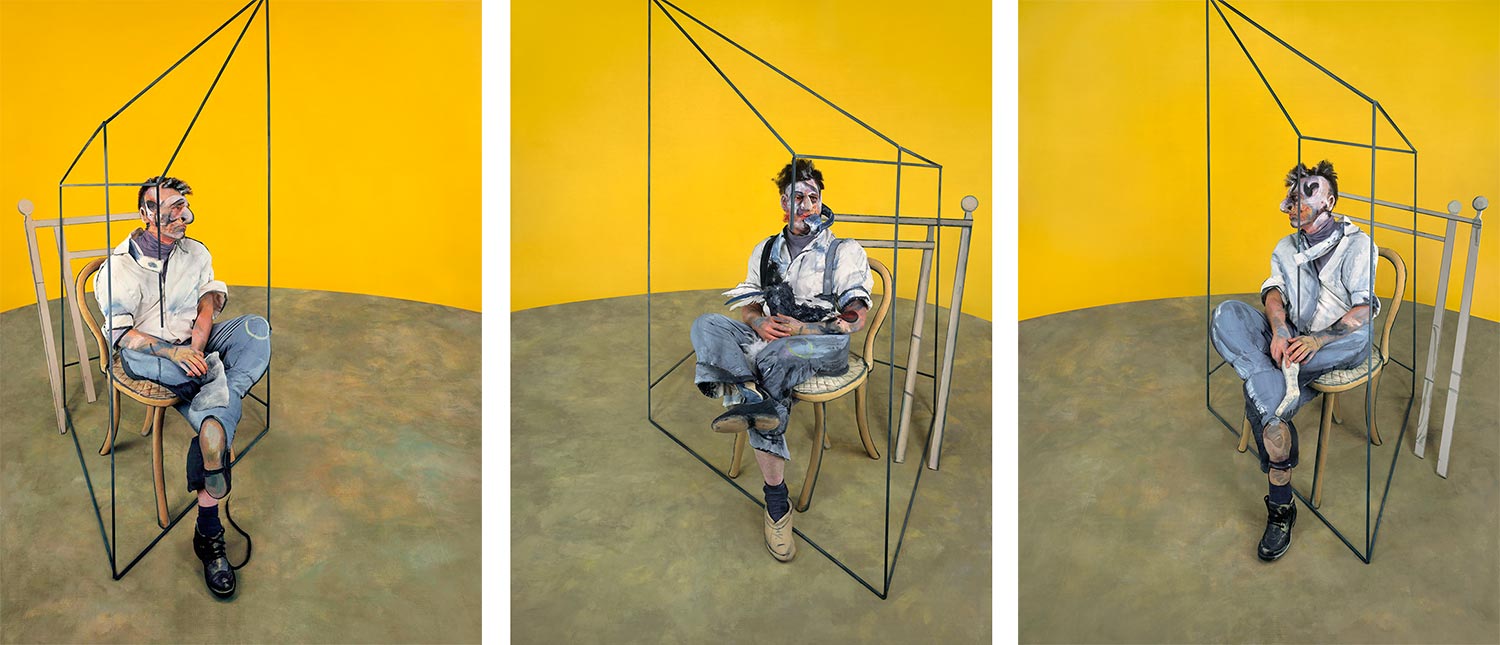
5. Francis Bacon’s “Three Studies of Lucian Freud” (1969)
The painting by the Irish-born British painter Francis Bacon became famous not only because of its reputation, but also because of the fame and international recognition it brought to the artist Lucian Freud. Critics see the work as a symbol of the relationship between the two artists. “”Three Etudes by Lucian Freud” took just 10 minutes of bidding to dethrone Edvard Munch’s “The Scream” as the most expensive painting ever sold, with $142.4 million in 2013. As many as 7 buyers competed for this painting.
One of the first works painted during the “modern art” era depicts Lucian Freud sitting on a wooden chair in an orange background. The extraordinary image is created by the depiction of light and space intersecting with the detailed image of the artist. This work made Bacon one of the most famous names in mid-20th century modern art.
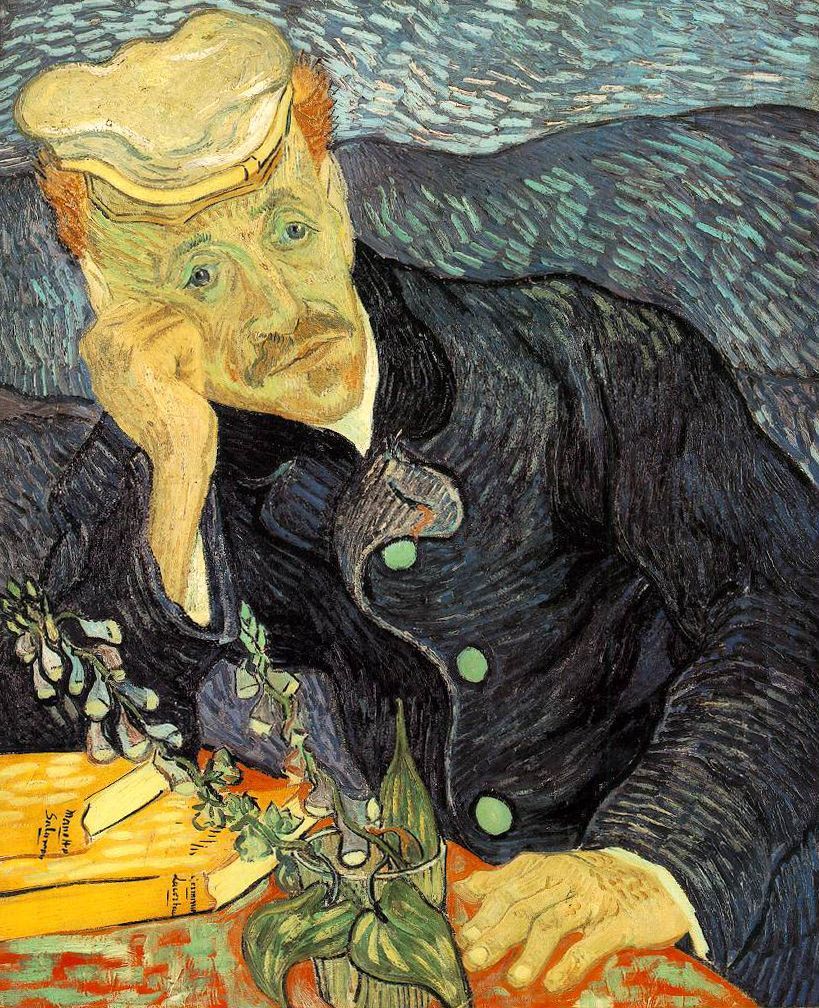
4. Van Gogh’s “Portrait of Doctor Gachet” (1897)
One of the most famous works by the Dutch painter Van Gogh, depicting the doctor who nursed the artist in the last years of his life, was sold to a Japanese businessman in 1990. It fetched as much as 82.5 million dollars. At the time, it was a drastic display of wealth to buy valuable works of art and the amount shocked the world. As a result, the painting made it into the top ten most expensive.
Art experts were also alarmed by the buyer’s statement that the Van Gogh art piece would be cremated with him when he died. Whether the buyer’s request was carried out is still unknown, as any search for the painting was fruitless.
The story of this painting is also interesting – at the beginning of the doctor’s visits, Van Gogh distrusted him, saying in letters to his brother that Gachet was “sicker than I am”. However, in later letters, the artist states that the doctor became a true friend. Their time together was truly inspirational for Van Gogh, who produced more than 70 paintings during this period, including this one.
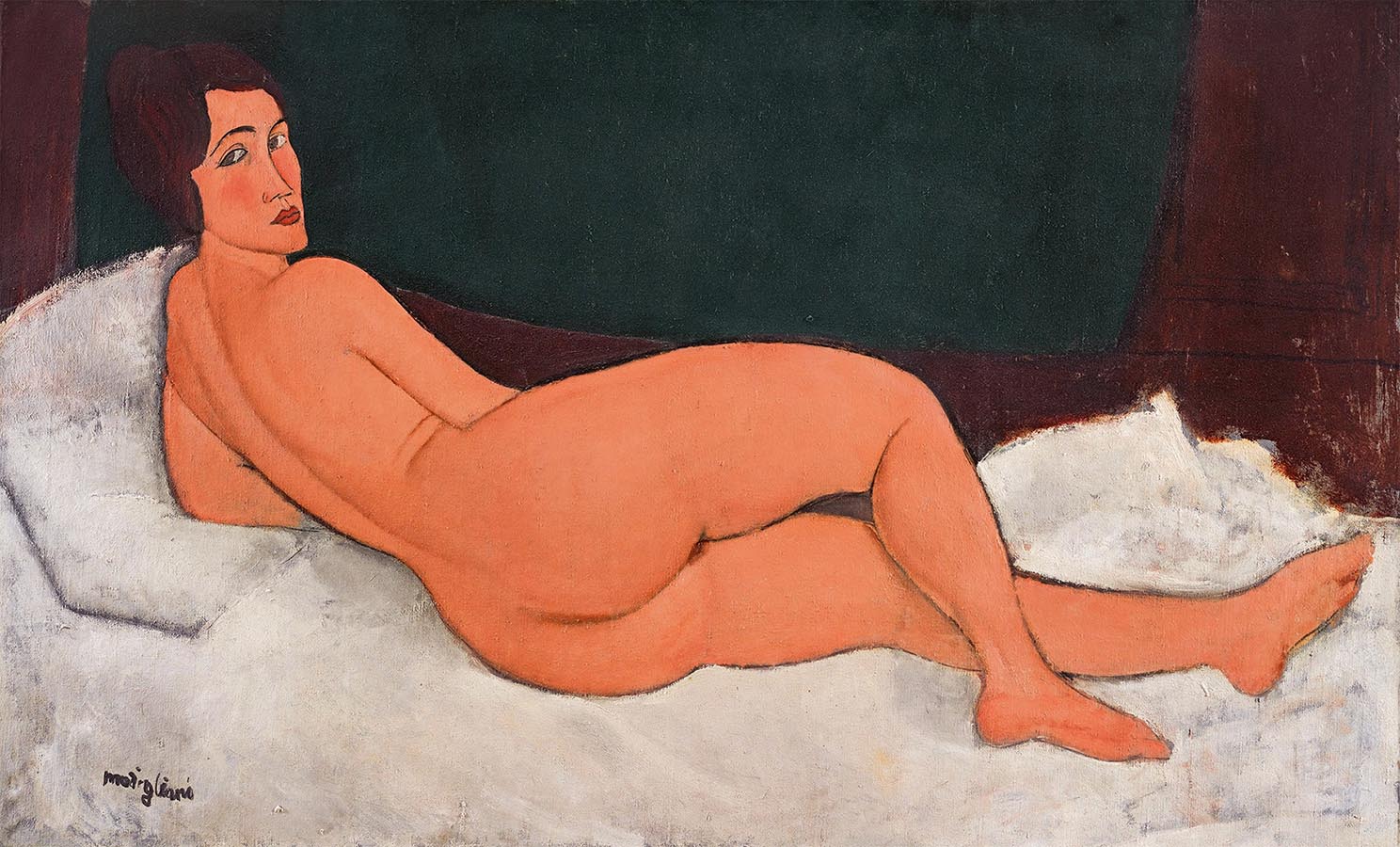
3. Amadeo Modigliani “Nu Couché” (1917)
Painted in Paris during the last years of the First World War, Modigliani was the subject of a wave of indignation when it was first exhibited, and a scandal erupted over its depiction of a naked female body. An angry crowd gathered outside the Berthie Weill Gallery and forced the police to close the exhibition. But times have changed, and in 2015, bidders went crazy for it, with the final price reaching a staggering $170.4 million. It was purchased by the Chinese couple Liu, who chose to display it in their private museum in Shanghai. Seven people competed for the painting.
This Expressionist masterpiece depicts a nude woman lying on a luxurious red sofa. The work made Modigliani one of the most desirable and collectible artists of the Expressionist movement – indeed, like Picasso, it was only the rarity of his works that prevented his paintings from achieving even higher prices.

2. Pablo Picasso’s “Les Femmes d’Alger Version O” (1954-1955)
2015 was indeed a significant year for the auction world, with the sale of the second and third paintings in the top ten in the same year. This painting was inspired by the European artist Delacroix, whom Picasso greatly admired. “Version O” is the last part of the series of paintings. In 2015, it had a pre-sale estimate of $140 million, but the bidding skyrocketed when the painting was bought for $179.4 million for the former Prime Minister of Qatar.
“The Algerian Women’s Version of O” has been on the move for a long time, having been bought by Victor and Sally Ganz in 1956 for 212,500 thousand. The painting was later sold in 1997 for 31.9 million dollars.
This painting by Picasso is a fine example of late Cubism, which began in 1954, shortly after the death of Henri Matisse, a French artist he admired greatly.
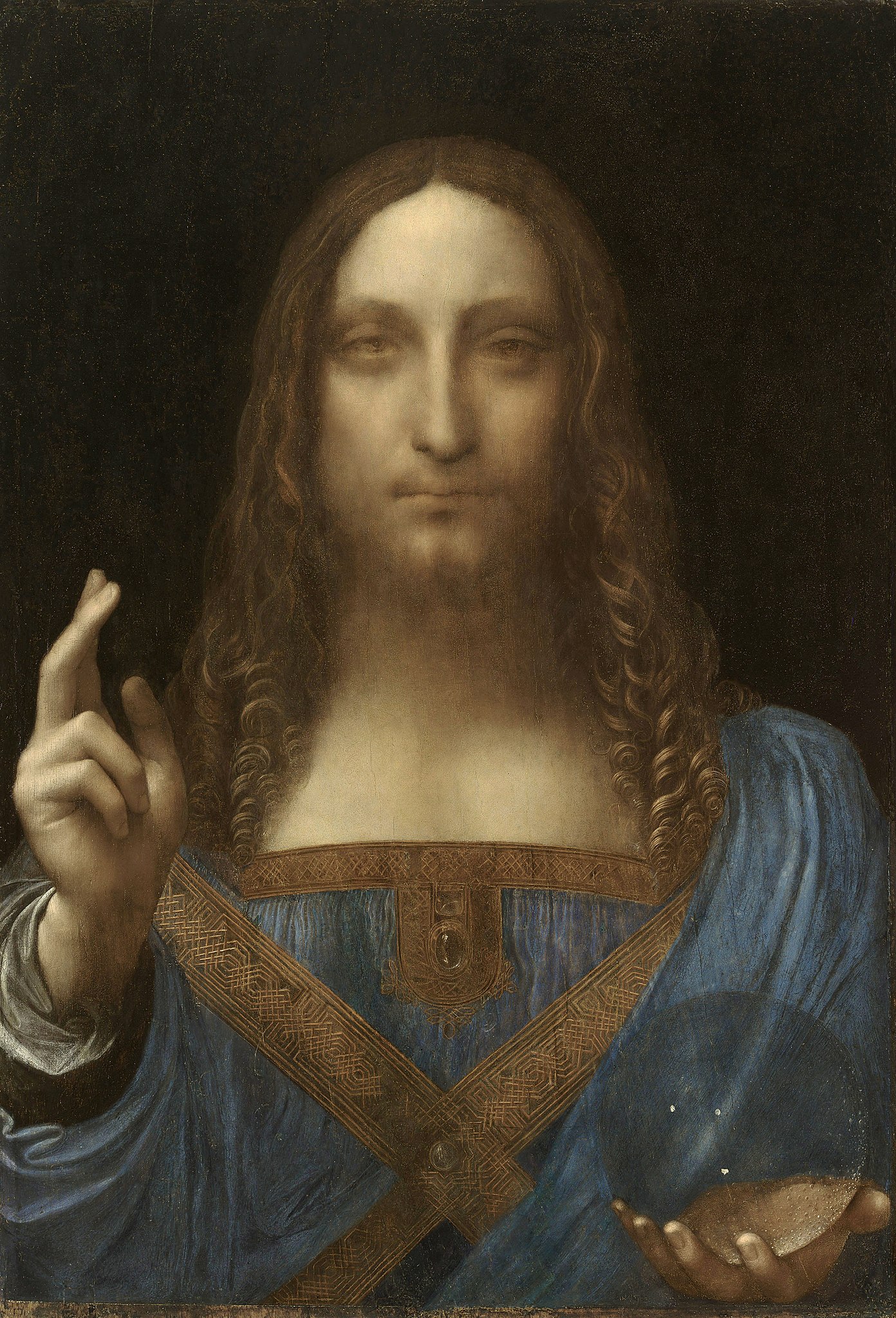
- Leonardo Da Vinci “Salvator Mundi” (1500)
The most expensive and controversial painting ever sold at auction, which has conquered the Everest of the top ten, belongs to none other than Leonardo Da Vinci himself. Of the twenty works of art that still survive, “Salvator Mundi” is the only one still in a private collection. The incredible final price of $450 million in 2016 sparked a lot of gossip about who could have been the potential buyer of the painting. In the end, the talk settled on the heir to the Saudi throne, Prince Mohammed bin Salman. The bidding for the painting lasted 19 minutes.
The authenticity of this painting is still a subject of controversy in the art community to this day. “Salvador Mundi” is so scandalous that there is even a “Netflix” documentary about it.
“Salvador Mundi” depicts Christ with one hand showing the sign of the cross and the other holding a sphere. For a long time, there was only speculation that it was a Da Vinci painting, but a restoration in 2006 confirmed this speculation.

